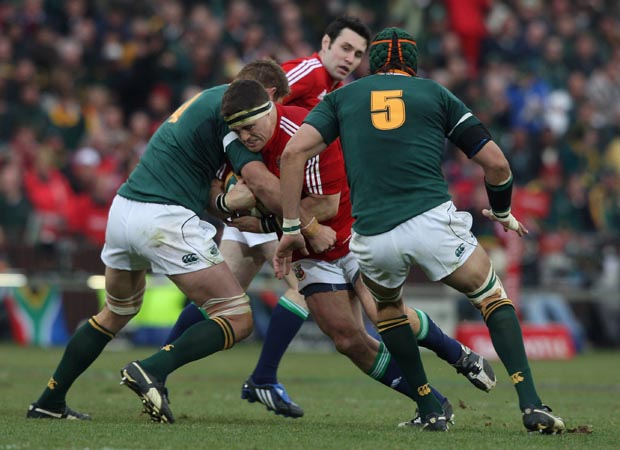 Andrew Sheridan was the undisputed strong-man of the pro game, and as he went into retirement this week the 34-year-old England and Lions loose-head did so as one of the great international props. News of Sheridan's decision to withdraw from the Toulon squad on medical advice due to a neck injury drew this tribute from Bob Dwyer, a World Cup-winning coach with an expert eye for assessing players honed over decades at the sharp end of the elite game: “I never came across anyone in rugby as strong as Sheridan.”
Andrew Sheridan was the undisputed strong-man of the pro game, and as he went into retirement this week the 34-year-old England and Lions loose-head did so as one of the great international props. News of Sheridan's decision to withdraw from the Toulon squad on medical advice due to a neck injury drew this tribute from Bob Dwyer, a World Cup-winning coach with an expert eye for assessing players honed over decades at the sharp end of the elite game: “I never came across anyone in rugby as strong as Sheridan.”
The 6ft 4ins, 19 stone Sheridan first came onto Dwyer's radar during a two year cross-over from1999-2000 when he coached Bristol. At that stage Sheridan was an enigma, a Dulwich College and England Schools star without a settled position. When I first saw him as a 20-year-old he was on Richmond's books as a No.8, and the way he smashed through contact, skittling opponents, made an immediate impression.
When Richmond went into receivership and Sheridan was snapped-up by Bristol I was tipped off by Dwyer, for whom I ghosted a column, that he had a rugby phenomenon in his squad. He suggested I talk to Mark Bennett, who was then,
as he is now Bristol's performance coach, about Sheridan. Bennett, a former Cardiff flanker who played for Wales in the 1995 World Cup, had been involved in weight training since he was 18 and said he had never seen anything quite like ‘Big Ted'.
This was his take on the 20-year-old Sheridan. “He's the strongest man I've ever seen pushing weights in any gym. We use the old Empire Gym in Bristol, where they have produced a number of Commonwealth Games and Olympic weightlifters. Even they were shocked by his raw strength. The bloke who runs it, Andy Sutor, is a former world championship weightlifter. He told me that Andy Sheridan is so strong he could step into competitition weightlifting straight away with a bit of technique training.”
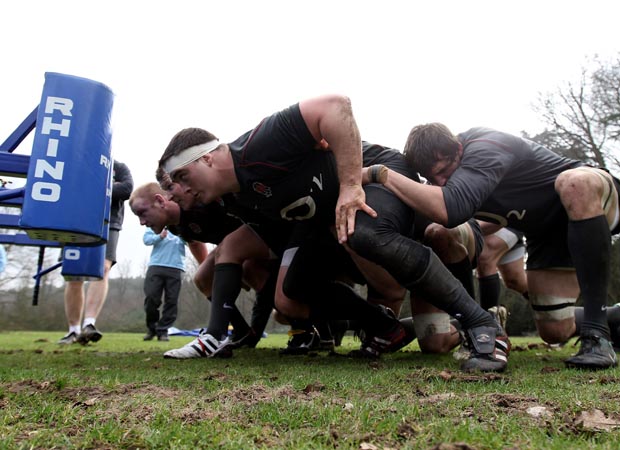 Bennett said that what put things in perspective for him was watching The World's Strongest Man on TV and realising that in the deadlift event – Sheridan would have come third with his best of 700lbs.
Bennett said that what put things in perspective for him was watching The World's Strongest Man on TV and realising that in the deadlift event – Sheridan would have come third with his best of 700lbs.
Bennett continued: “He bench pressed 460lbs and after summer training I'd expect him to be pressing 500lbs, which in powerlifting terms would make him world class. His strength levels are equivalent to those of world champion powerlifters and also top field athletes and American Football linemen. He is as fast as most back-row forwards, and was always up with the leaders in sprint work.”
Bennett revealed that Sheridan was so much stronger than his peers in the Bristol squad that he was in a league of his own in training. “Basically, for rugby purposes he was so strong that we didn't bother testing him anymore.”
Bennett had come across only two players who could do one rep of 20 per cent less than Sheridan, whose quota was three sets of three. Bennett's conclusion? “He's got the sort of strength levels that if he never lifted any weights again and just did regular rugby training, he'd never have any problems.”
Sheridan's Spartan work ethic meant that there's not much chance of that happening. Bennett revealed: “We still set him targets because he loved weight training so much, but it was a standing joke within the squad that no-one wanted to train with him. He did parallel bar dips with 130lbs round his waist and chin-ups with 22lbs.”
Dwyer described him as a model pro even then – motivated, quiet, modest, and intelligent.
However, even then Bennett said he had a sharp sense of humour. “We'd just started pre-season training and he was doing chin-ups with the props,” recalled Bennett. “One of them only managed to do one chin-up. Andy looked at him and said, ‘Don't worry, when I started I could only do one – but I was only eight'.”
Yet, despite his remarkable physical attributes, Sheridan had a serious obstacle to overcome. He recognised that he was too short to be an international lock, and not fast enough to be a Test blindside or No.8, and therefore he decided, with the help of Peter Thorburn – who succeeded Dwyer at Bristol – to switch to prop.
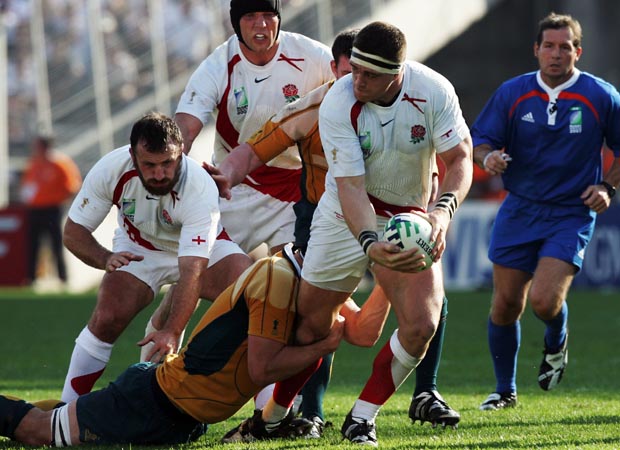 Sheridan once explained to me why he swapped life in the second row to join the front-row union. “I wasn't getting a lot of game time at lock because they wanted more line-out variety. I could win my own ball, but they wanted more of the opposition ball, and I wasn't light enough to lift. Prop is confrontational, it suits my temperament, and, physique-wise, there are plenty of tall props….the physical challenge is part of the enjoyment.”
Sheridan once explained to me why he swapped life in the second row to join the front-row union. “I wasn't getting a lot of game time at lock because they wanted more line-out variety. I could win my own ball, but they wanted more of the opposition ball, and I wasn't light enough to lift. Prop is confrontational, it suits my temperament, and, physique-wise, there are plenty of tall props….the physical challenge is part of the enjoyment.”
Dean Ryan, who was a player-coach at Bristol at the time, takes up the story.
“He was still a back-rower or lock when he first came to Bristol, but it was obvious he would not play at the level he wanted to unless he moved. He wasn't mobile enough for back row, or big enough for a front lock, so he had to move to the front-row.
“It was really about his desire to be successful, and it wasn't going to happen at 4 or 6, and the way it mapped out he went on to be one of the great loose-heads of the last 10 years.
“He was just so aggressive and physical, and with that strength no one could handle him. He wanted to be the best, and he was always going to make it.
“He was at his best when the game was structured around him at loose-head, and his ability to carry was a huge benefit. At the scrummage he could get the dominance which meant he could alter and define a game from the front-row. He had enough highlights against Australia, and others, which proved it. He was such a big strong man that if you couldn't handle him technically then you were in all sorts of bother – because in a strength contest you were always coming second.”
As Ryan suggests, Australians like Dwyer do not have the fondest memories of Sheridan because his reputation as a mountainous man-wrecker reached a peak because of the way he pulverised the Wallaby scrum.
Even more extraordinarily he did so just 18 months after joining Sale from Bristol in 2003, following barely four seasons as a loose-head.
 Sheridan is part of an elite band of players who made a massive impact on his first start for England, in his case against Australia in 2005 at Twickenham (he had won his first cap as a replacement against Canada the year before). The epithet “speak softly and carry a big stick” summed up Sheridan, because the quietly-spoken No.1 almost single-handedly demolished the Australian scrum.
Sheridan is part of an elite band of players who made a massive impact on his first start for England, in his case against Australia in 2005 at Twickenham (he had won his first cap as a replacement against Canada the year before). The epithet “speak softly and carry a big stick” summed up Sheridan, because the quietly-spoken No.1 almost single-handedly demolished the Australian scrum.
Having put the Australian tight-head Al Baxter into reverse gear at every scrum in the match, the French referee Joel Jutge, who insisted that England were rewarded for their superior scrummage, lectured Baxter and his Australian front-row partners. His instruction was, “Push straight – it's easy,” after repeated Wallaby attempts to collapse or pack at an angle to minimise the power Sheridan was generating.
There was nothing easy about it, and 10 minutes from time when Baxter could no longer take the strain, he was sin-binned for collapsing a scrum in front of his own posts. It was even harder on Matt Dunning, the Wallaby loose-head who was forced to swap sides to confront Sheridan at the next scrum.
When Dunning collapsed it was to stop Sheridan shunting him into the sixth row of the North Stand, and he was stretchered off with a neck injury that, thankfully, revealed no serious damage.
Afterwards, England coach Andy Robinson heaped praise on the new Red Rose powerhouse, who was voted man of the match in a 26-16 victory. “This is just the start. Today he destroyed what was put in front of him, and you can't ask for more from a player.”
Meanwhile, Wallaby coach Eddie Jones ruefully contemplated his dismembered scrum, saying: “That was a new level of scrummaging to compete against today. Sheridan led the way, he put enormous pressure on the right hand side of our scrum, and technically we didn't deal with him very well.”
Sheridan, always reluctant to hype himself up, was characteristically low key. “It was a magnificent occasion. I really enjoyed it, but I don't like to take the credit – it's all about the team.”
For many his finest hour (and 20 minutes) came in the 2007 World Cup quarter-final against Australia in Marseille when Sheridan spear-headed a forward assault which was to take an underdog England side to a 12-10 win – and thereafter to within a whisker of retaining the Webb Ellis trophy.
It was Sheridan who put the skids under the Wallaby scrum, giving England the platform and the pressure – and Jonny Wilkinson's boot did the rest. However, the idea put forward by some naysayers that he was only successful against dodgy Australian props is utter nonsense.
The 2007 semi-final against France and the final against South Africa demolish that theory, as do the majority of his 40 caps for England, and two for the Lions, both in 2009. He was outstanding in the Lions 28-9 dusting of South Africa in the final Test of that tour and, like his great mentor, Phil Keith-Roach, I am convinced that if he had played in the first Test in Durban the Springboks would not have got the jump on the tourists' scrum to take a crucial lead in the series.
Like so many elite props, Sheridan was dogged by injuries throughout his career, and it cost him probably half as many caps again. However, he was rewarded at club level by helping Sale Sharks to secure a first Premiership title in 2006, and his move to Toulon in 2010 soon saw him ensconced as one of the favourites of the Stade Mayol crowd.
He finished on a high by helping Toulon win the Heineken Cup for the first time in 2013, and had a hand in them retaining it last season until his neck trouble flared up in February.
Sheridan has always been a quietly but fiercely determined, singular character. He is a man of many parts, a musician, a qualified plumber, and is already embarked on a new career as a wine-maker having taken courses in viticulture over the last few years.
Sheridan is also talked about with almost universal affection by those who know him – and deep respect by those he ran into, or packed down against, as a once-in-generation human force of nature.
*This article was first published in The Rugby Paper on October 5.



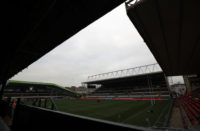
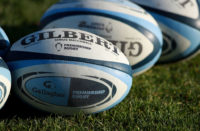























Pingback: you can check here
Pingback: ติดตั้งโซลาเซลล์